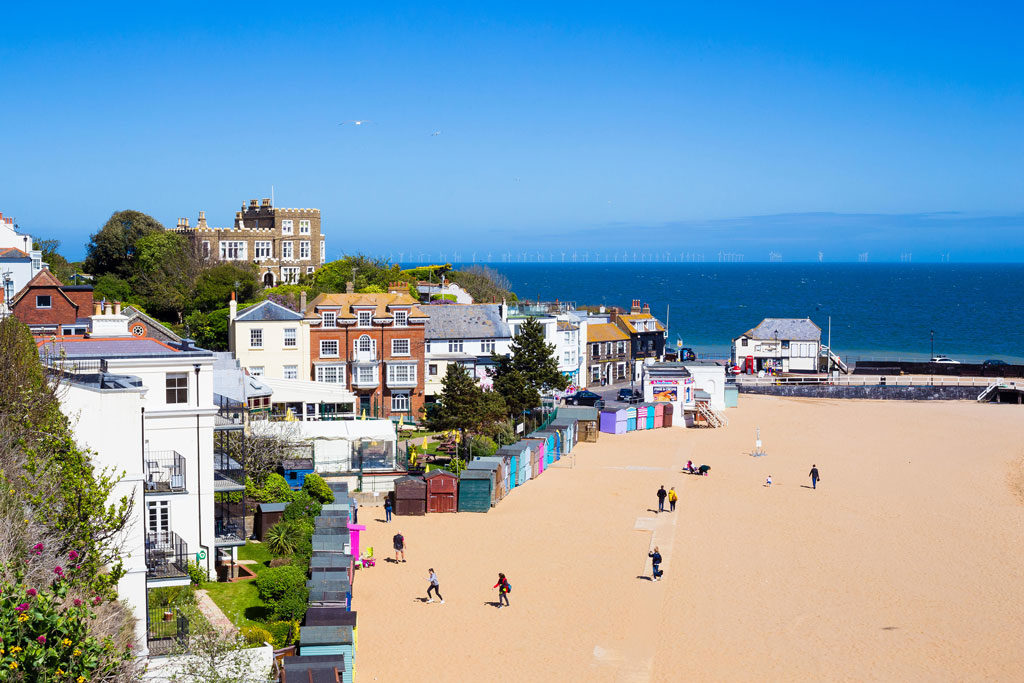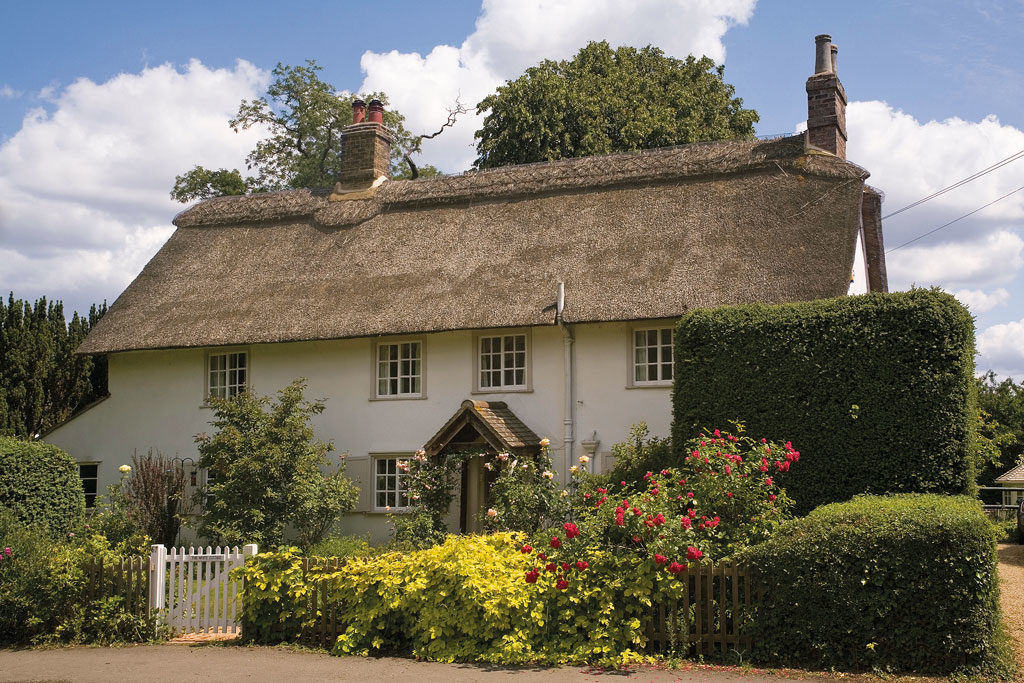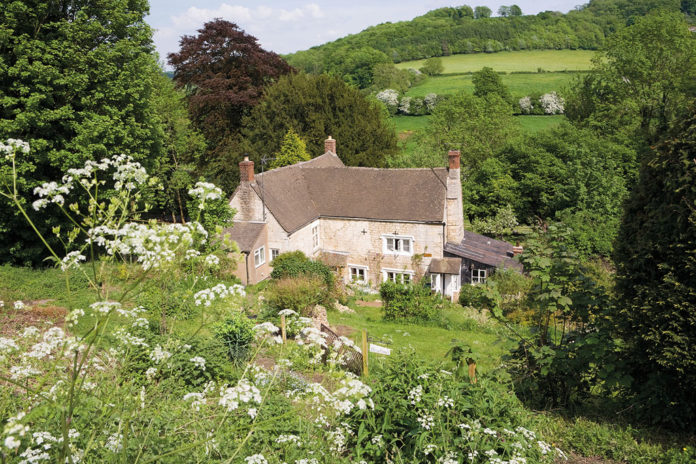We visit British book settings that inspired iconic scenes in the works of some of our favourite authors
Come with us as we visit some famous British book settings that have inspired iconic scenes in the works of some of our most popular authors: from picnics on the Cornish coast with poet John Betjeman (“Sand in the sandwiches, wasps in the tea” – ‘Trebetherick’) to walking amid woods with Wordsworth.
British book settings: Broadstairs
It is the brightest day you ever saw. The sun is sparkling on the water… The tide is in, and the fishing boats are dancing like mad.” Charles Dickens, writing to a friend in 1841, simply loved Broadstairs and nearly every summer from 1837 to 1859 he escaped to the Kent seaside resort in order to work on his bestselling novels away from London’s bustle.
Most notably he put the finishing touches to David Copperfield while ensconced at cliff-top Fort House – now known as Bleak House – and modelled his character Betsey Trotwood on local resident Miss Mary Pearson Strong: the latter’s aversion to donkeys passing in front of her home on Victoria Parade was transformed into Betsey’s “incessant war” against the donkey-boys. “Jugs of water, and watering-pots, were kept in secret places ready to be discharged on the offending boys; sticks were laid in ambush behind the door…”

Keen explorers of these British book settings can follow a town trail around Broadstairs’ cobbled squares and fishermen’s cottages to discover Dickens’ haunts, and tour Bleak House, today offering luxury B&B-style accommodation that includes the author’s original bedroom, with use of his study overlooking the fabulous horseshoe of Viking Bay. Miss Strong’s cottage has become the Dickens House Museum, where Copperfield fans will recognise the square gravelled garden and old-fashioned parlour.
British book settings: The Thames
Jerome K Jerome originally intended Three Men in a Boat (1889) to be a serious guide to the Thames, “its quiet backwaters, its sleepy towns and ancient villages”. But the tale quickly turned instead into a classic of British humour charting the accident-prone rowing holiday of the eponymous three men and Montmorency the dog. Heading upriver from Kingston, London, the heroes niggle about ‘loud’ blazers and burnt breakfasts; sense the centuries slip back to 1215 and imagine themselves waiting to witness King John set his seal on Magna Carta at Runnymede.
Passing Cliveden Woods in Berkshire (“In its unbroken loveliness… perhaps, the sweetest stretch of all the river”) and Cookham, they rejoice in feeling “like knights of some old legend, sailing across some mystic lake into the unknown realm of twilight, unto the great land of the sunset…” and crash into a punt of disgruntled fishermen.
You, too, can cast off for all sorts of excursions on the Thames (without the mishaps), including from London, Windsor, around Cliveden, Henley and Oxford: hiring rowing boats or picnic punts, going on sightseeing trips or themed cruises (www.visitthames.co.uk).
British book settings: Children’s books
And while Jerome’s not-so-doughty heroes, dampened by a little summer rain, abandon their holiday at Pangbourne, you would do well to explore further. As the Water Rat says in children’s favourite, The Wind in the Willows (1908), “there is nothing – absolutely nothing – half so much worth doing as simply messing about in boats”.

Kenneth Grahame’s tale of Mole, Badger, Ratty and Mr Toad grew from bedtime stories he told his son Alastair while living at nearby Cookham Dean, plundering his own dreamy childhood memories of the river, woodlands and wildlife; Grahame lived his final years at Pangbourne.
Summer is made for children’s adventures, and for Winnie the Pooh fans an ‘expotition’ to Ashdown Forest in East Sussex, where A A Milne set his whimsical tales in the 1920s, is a must.
Or share a slightly later era of innocence and adventure Swallows and Amazons style with Arthur Ransome: boating in the Lake District or Norfolk Broads.
British book settings: The Lake District
Romantic poet William Wordsworth famously wrote of spring daffodils in the Lake District, but for a summer ramble head with him to south Wales where his ‘Lines composed a few miles above Tintern Abbey’ recall a return visit with his sister Dorothy in 1798.
The cult of walking tours taking in Picturesque ruins, Nature and dramatic scenes of beauty was in full swing, and these delights are still on offer today on the Wye Valley Walk through the wooded gorge along the river to the medieval abbey, with:
“…steep and lofty cliffs,
That on a wild secluded scene impress
Thoughts of more deep seclusion…”
For Wordsworth, memories of such scenes refreshed the soul with “sensations sweet” long after visiting.
British book settings: The Cotswolds
A 40-mile drive from Tintern into the Cotswolds and the Slad Valley reveals another walk through unforgettable summer scenes: of Laurie Lee’s Cider With Rosie (1959), his bittersweet memoir of the sunny uplands of a vanished youth and semi-feudal way of life.
The hauntingly lyrical book gave the world its image of the Cotswolds as the epitome of quaint, rural England, “with cattle, brilliant as painted china, treading their echoing shapes” and beech trees sunlit “as though clogged with wild wet honey”.Wander the Laurie Lee Wildlife Way through village and woodland of the Slad Valley, dotted with posts inscribed with Lee’s poetry; visit Holy Trinity Church where the author is buried and the ancient Woolpack inn where he liked to drink – real ale rather than cider!
There is more honey and nostalgia in one of the most famous couplets in English poetry:
“Stands the Church clock at ten to three?
And is there honey still for tea?”
British book settings: Cambridge
Rupert Brooke posed the question in 1912 while abroad and pining after ‘The Old Vicarage, Grantchester’: conjuring up visions of lying “flower-lulled in sleepy grass”, gazing at the Cambridge sky as hours and centuries blur. Two years later he would write of dying in “some corner of a foreign field / That is for ever England”, but ‘Grantchester’ is suffused with the idyllic summer happiness of a quintessential English village.
Brooke lived in The Old Vicarage (now home to novelist Jeffrey Archer), gathering luminaries like Virginia Woolf around him while pursuing a fellowship at King’s College, Cambridge three miles away.

You can walk or punt along the River Cam past Grantchester Meadows to the village and visit the church, which dates from the 14th century. Then take afternoon tea including sandwiches, cakes and scones in The Orchard Tea Garden, the pavilion where Brooke and his friends tucked into refreshments when it was too rainy to sit outdoors (booking required; the village also boasts numerous good pubs).
British book settings: Wales
For a memorable finale to your summer reading, bask in the evocative descriptions of the ‘Author’s Prologue’ to Dylan Thomas’s Collected Poems (1952):
“This day winding down now
At God speeded summer’s end
In the torrent salmon sun,
In my seashaken house
On a breakneck of rocks…”
The “seashaken house” is the Dylan Thomas Boathouse below the cliff on the water’s edge of the west Wales town of Laugharne, where the author enjoyed a purple patch of creativity in his Writing Shed in the four years before his untimely death in 1953.
After peeking into the cluttered shed, relax over bara brith (Welsh fruit bread) and tea on the Boathouse terrace. Then revel in views over the Taf estuary as dusk hovers towards “dogdayed night” and:
“My ark sings in the sun
At God speeded summer’s end
And the flood flowers now.”
Read more:






 © 2024
© 2024